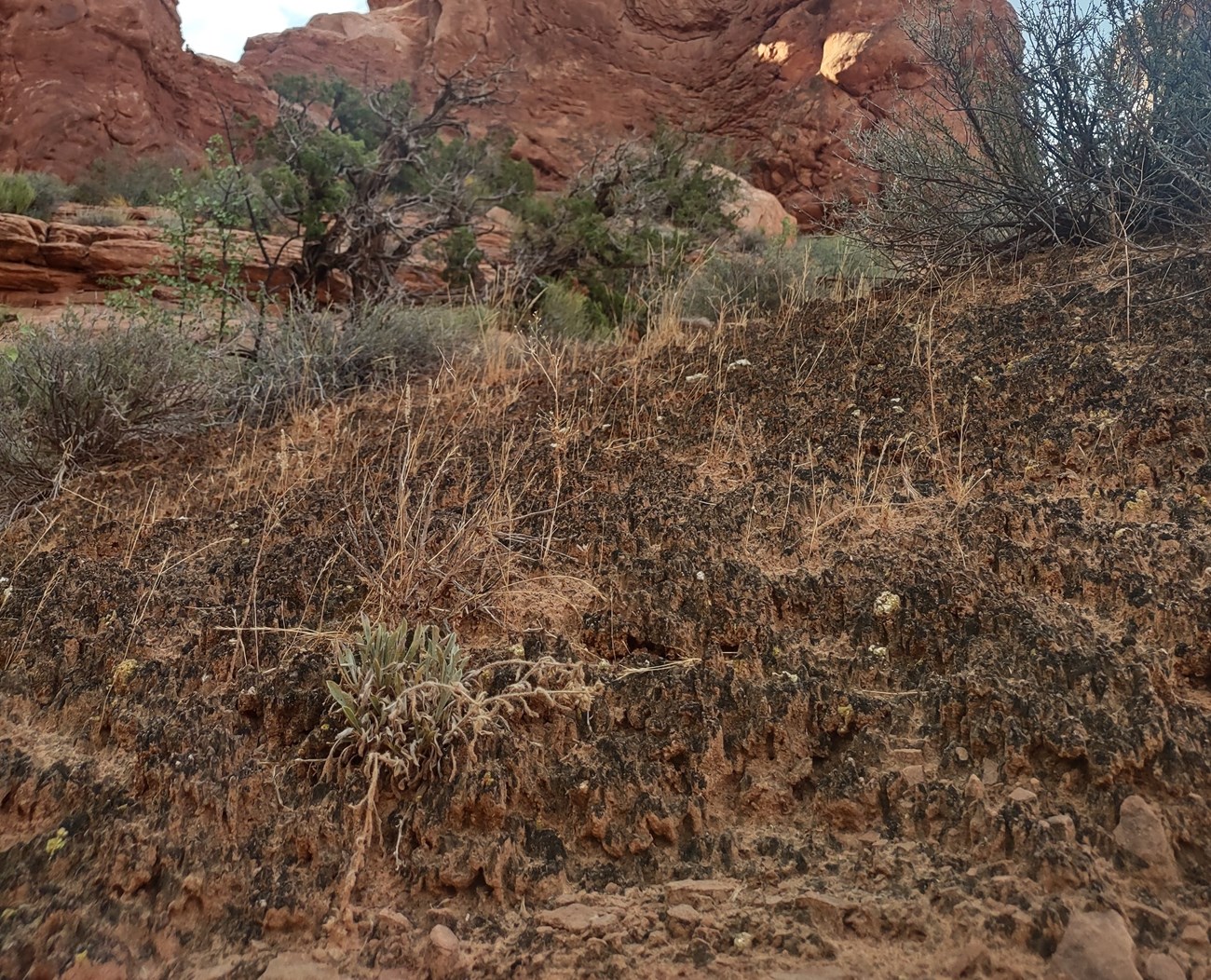
NPS Biological soil crusts, sometimes called cryptobiotic soil crusts, are an important part of arid and semi-arid ecosystems throughout the world, including those in Glen Canyon National Recreation Area. Crypto means hidden, while biota means life. These crusts are composed primarily of very small organisms that cannot be seen with the naked eye. Well-developed cryptobiotic soil crust is often much darker than the soil it is on top of, and has a sponge-like look, with bumps and small “pinnacles.”. The extent of crust development depends on soil structure, texture, and chemistry as well as elevation and microclimate. 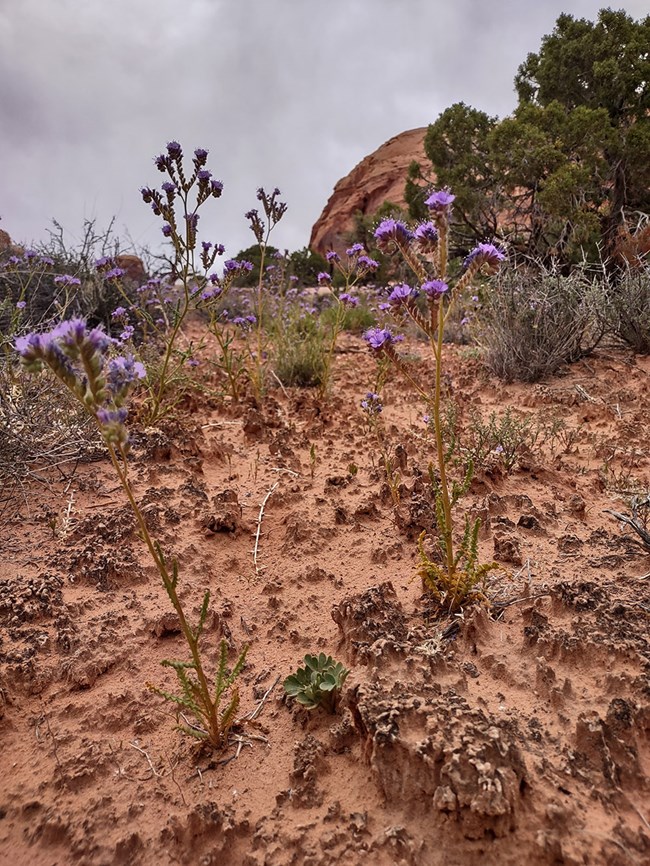
NPS Biological soil crusts are created by living organisms such as algae, cyanobacteria, and fungi. Cyanobacteria, the primary component of most soil crusts, are able to photosynthesize when they have enough water. As cyanobacteria colonizes the soil, they release gelatinous filaments that bind soil particles together in a dense matrix. The result is a hardened surface layer made up of both living organisms and inorganic soil matter. This crust is an important means by which arid soils resist erosion by wind and water. Many cryptobiotic soil crusts are able to absorb water more quickly than regular soils and as a result reduce runoff and impede evaporation. In addition, the cyanobacteria in the crust, as well as some of the surface lichens, are nitrogen fixers, meaning that they can chemically convert atmospheric nitrogen into a form usable by other plants. 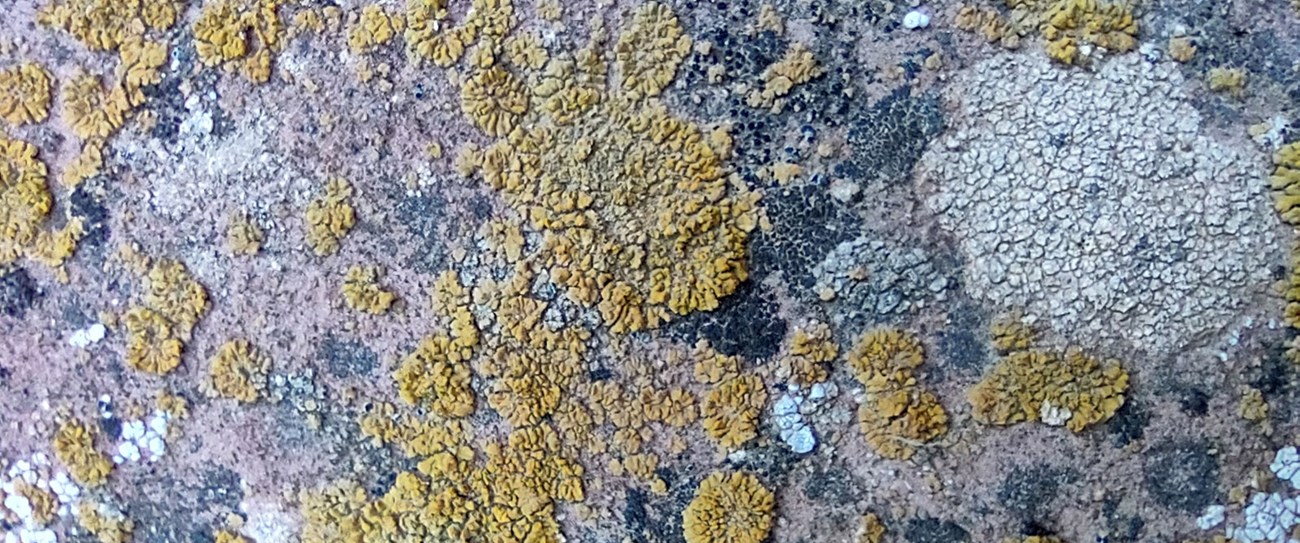
NPS Lichens and mosses often grow on the stabilized surfaces of the crust, forming a patchwork cover that further prevents water evaporation. Many unusual and unique organisms occur in association with crusts, including many rare and undescribed algal species as well as rare lichens. Older, developed crusts support amazing biodiversity of microorganisms and plant life. 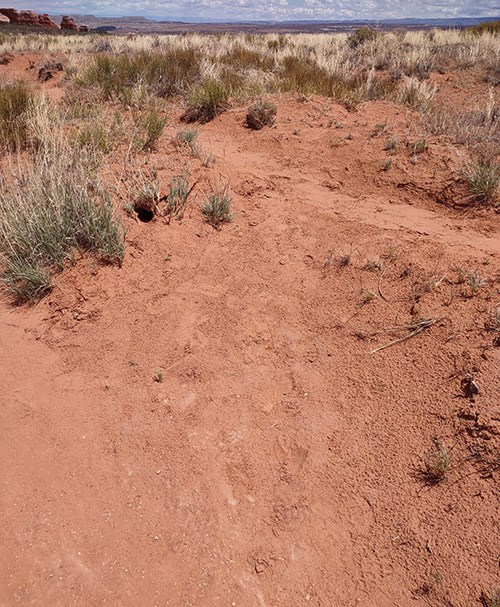
NPS Biological soil crusts are quite fragile, especially during the drier seasons. Small amounts of pressure will break through the crust and expose the loose sand or soil beneath to the forces of erosion. As a result, humans can have a major impact on these delicate crusts. Footprints from hikers and livestock will crush crusts underfoot, and the tires from motorized vehicles have an even greater potential to damage large areas. Once compacted, cryptobiotic soils can take anywhere from a few years to several decades or longer to recover. Research suggests that recovery of some of the algal and lichen components may take much longer, and could take several hundred years in very dry environments. Until they recover, the soils in the impacted area can continue to be damaged by accelerated erosion and nutrient loss. 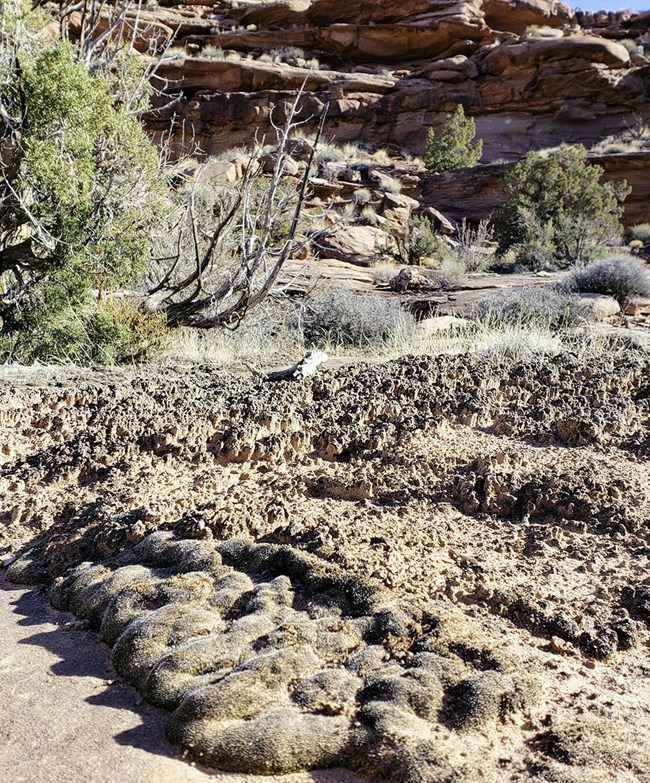
NPS Without the biological soil crusts stabilizing the soil, erosion will expose the roots of nearby plants, which can eventually kill them. New plants also have a much harder time getting established without soil crusts providing increased moisture and nitrogen. And as plant life becomes sparser, the animal life that relies on plants for food or shelter will also be threatened. When soil crust is destroyed over a large area, the cascading effects ripple up through the ecosystem. |
Last updated: June 17, 2024
